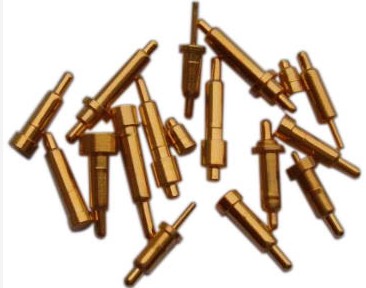Time:2025-10-15 Views:1 source:News

Electrical isolation of pogopin probes is a critical aspect in various electronic applications, ensuring the reliable and safe operation of circuits by preventing unwanted electrical conduction between different components or sections. Pogopin probes, also known as spring - loaded pins, are widely used for electrical connections due to their compact size, durability, and ease of use. However, in many scenarios, maintaining electrical isolation is essential to avoid interference, short - circuits, and ensure the proper functioning of sensitive electronic devices.
One common method to achieve electrical isolation in pogopin probes is through the use of insulating materials. The body of the pogopin probe is often made from a non - conductive material, such as high - quality engineering plastics like PEEK (Polyether Ether Ketone) or LCP (Liquid Crystal Polymer). These materials offer excellent electrical insulation properties, preventing the flow of electrical current through the probe's body. Additionally, the spring within the pogopin probe can be coated with an insulating layer. For example, a thin layer of insulating paint or a special polymer coating can be applied to the spring to isolate it electrically, ensuring that the electrical connection is only established through the intended contact points at the tip of the probe.
Another approach to electrical isolation involves the design of the probe's structure. In some cases, pogopin probes are designed with a multi - piece construction where different parts are separated by insulating barriers. This can prevent electrical leakage between the internal components of the probe and the external environment. For instance, the contact tip and the spring - loaded mechanism can be separated by an insulating sleeve, which not only provides mechanical support but also enhances electrical isolation.
In applications where high - voltage or high - frequency signals are involved, additional measures may be required for electrical isolation. Specialized pogopin probes with enhanced insulation features, such as thicker insulating layers or multiple layers of insulation, are used. These probes are often tested rigorously to ensure they can withstand the electrical stress without breaking down the insulation. Moreover, proper spacing and arrangement of pogopin probes on circuit boards or connectors are crucial for maintaining electrical isolation. Adequate clearance between probes prevents electrical arcing or crosstalk, ensuring that each connection operates independently and reliably. Overall, electrical isolation of pogopin probes is a complex yet vital consideration, and careful material selection, structural design, and testing are necessary to meet the demanding requirements of modern electronic systems.
Read recommendations:
High temperature resistant Magnetic PogoPin with Long Lifespan